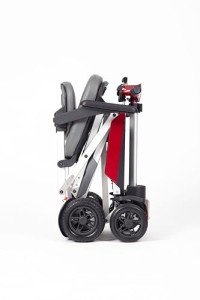5 Must-Know Mobility Devices Techniques To Know For 2024

Understanding Mobility Devices: Enhancing Independence and Quality of Life
In today's busy world, the desire for mobility is universal. Nevertheless, specific medical conditions or age-related obstacles can hinder movement, resulting in a continuous look for assistance. Mobility devices function as vital tools to improve self-reliance, enhance quality of life, and allow individuals to engage completely in their communities. This article supplies a detailed overview of mobility devices, including their types, features, selection criteria, and more.
Types of Mobility Devices
Mobility devices range from easy aids to complicated equipment, customized to fulfill various requirements. Below is a table summarizing typical types of mobility devices:
| Type of Device | Description | Ideal For |
|---|---|---|
| Walkers | Four-legged support devices that offer superior stability while walking. | People requiring additional support. |
| Walking sticks | Single or three-legged sticks that improve balance and support walking. | Those with slight mobility difficulties. |
| Wheelchairs | Seats mounted on wheels, readily available in manual and electric versions. | Individuals with minimal or no mobility. |
| Scooters | Electric automobiles designed for outside usage and ease of navigation. | Those who can't stroll fars away. |
| Crutches | Devices that assist individuals transfer weight away from a hurt leg. | Individuals recuperating from leg injuries. |
| Rollators | Walkers with wheels, seats, and brakes for enhanced mobility. | Users requiring rest options while walking. |
| Lift Chairs | Reclining chairs that assist users in standing and sitting down. | Seniors or those with mobility constraints. |
| Mobility Scooters | Small electric vehicles for minimal mobility, often utilized outdoors. | People needing help over fars away. |
Key Features of Mobility Devices
When choosing a mobility device, numerous key functions must be thought about to make sure optimal performance and ease of usage:
- Weight Capacity: Understanding the gadget's weight constraint is vital for security and effectiveness.
- Adjustability: Devices must be adjustable in height and width to fit the user conveniently.
- Portability: Lightweight and foldable alternatives are important for users who travel or need transport.
- Stability and Safety: Look for features like anti-tip wheels and sturdy structures to enhance safety.
- Reduce of Use: Simple mechanisms and easy to use designs can make a substantial difference in everyday usage.
- Comfort: Ergonomic designs and cushioned seats can boost the user experience.
Picking the Right Mobility Device
Choosing the right mobility device can be a daunting task. Here are some actions to assist the decision-making procedure:
- Assess Needs: Evaluate the person's mobility challenges and everyday activities.
- Seek advice from a Professional: Engage health care specialists who can provide recommendations based on the individual's physical condition.
- Trial Options: If possible, trial different devices to figure out convenience and performance.
- Evaluation Budget: Consider the cost of the gadget, including any extra functions or modifications needed.
- Research Options: Determine the very best brands and designs by checking out reviews and contrasts.
Table: Comparative Analysis of Popular Mobility Devices
| Device | Benefits | Downsides |
|---|---|---|
| Walkers | Exceptional stability, promotes walking. | Large, might limit motion in small spaces. |
| Canes | Lightweight, boosts balance. | Might not offer enough support for extreme mobility concerns. |
| Wheelchairs | Suitable for those with substantial mobility constraints. | Can be troublesome, particularly in indoor environments. |
| Scooters | Great for outdoor usage, easy to maneuver. | Minimal indoor use, heavier. |
| Rollators | Provides rest choice, simple to move. | May require more space than conventional walkers. |
| Raise Chairs | Comfortable, assists transition from sitting to standing. | More pricey, larger footprint. |
Frequently Asked Questions (FAQs)
1. What is a mobility device?
A mobility gadget is any tool created to help individuals in moving and navigating their environment. This includes walkers, wheelchairs, scooters, and crutches.
2. How do I know which mobility gadget is best for me?
Consider your particular mobility difficulties, physical capabilities, and lifestyle requirements. Consulting with healthcare professionals can likewise offer tailored recommendations.
3. Are mobility devices covered by insurance?
Lots of insurance plans, consisting of Medicare, may cover specific mobility devices. It's essential to contact your insurance company for particular coverage details.
4. Can I rent a mobility gadget rather of buying one?
Yes, many medical supply shops and drug stores provide leasings for mobility devices. This option is useful for individuals with temporary mobility concerns.
5. How can I keep my mobility device?
Regular upkeep is crucial. It includes cleaning the device, looking for wear and tear, and making sure all parts are functioning properly.
The Impact of Mobility Devices on Quality of Life
Mobility devices significantly improve the lifestyle for people with limited mobility. They cultivate independence, motivate social interaction, and enhance access to important services and leisure activities.
- Increased Independence: Users can browse their areas, go to events, and participate in hobbies without relying on others.
- Social Engagement: Mobility devices help with participation in social gatherings, thus combating feelings of isolation.
- Improved Safety: Devices supply stability and reduce the danger of falls, promoting user self-confidence.
Mobility devices are more than just tools for motion; they are entrances to independence and quality living. By comprehending the different kinds of mobility aids readily available, their key features, and factors to consider for picking the best device, people can make educated decisions about their mobility requires. Eventually, view it now can lead to a more active, fulfilling life. Whether it's a walker, wheelchair, or scooter, the best choice contributes considerably to enhancing the mobility and self-reliance of users.

